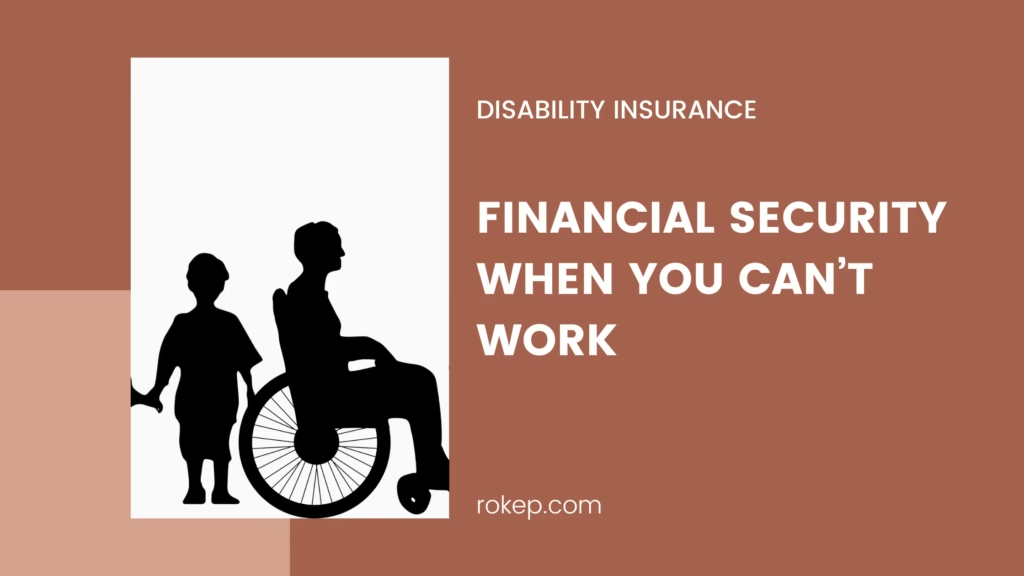In an unpredictable world, financial stability is a cornerstone of security. Yet, for many Americans, the ability to earn a living is tied directly to their physical and mental health. Disability insurance provides a critical safety net, ensuring income protection when illness or injury prevents someone from working. Despite its importance, disability insurance remains underutilized and misunderstood, even as statistics reveal its relevance: over one in four workers will experience a disabling event before reaching retirement age, according to the Social Security Administration (SSA) article explores the types of disability insurance, why it matters, how it works, and actionable steps individuals can take to safeguard their financial future with this essential coverage.
Understanding Disability Insurance
Disability insurance replaces a portion of your income if you become unable to work due to illness or injury. Unlike health insurance, which covers medical expenses, disability insurance focuses on protecting your earning potential.
There are two primary types:
- Short-Term Disability Insurance (STD): Covers temporary disabilities, such as recovery from surgery or childbirth. Benefits typically last between three to six months.
- Long-Term Disability Insurance (LTD): Provides income for more severe, long-term conditions. Benefits often continue for years, potentially until retirement, depending on the policy.
Why Disability Insurance is Essential
The financial impact of a disability can be staggering. Without income protection, medical bills, daily living expenses, and long-term care costs can quickly deplete savings. Even a short-term inability to work can disrupt financial stability.
Key Statistics Highlighting Its Importance:
- According to the Council for Disability Awareness, more than 50% of Americans lack emergency savings to cover three months of expenses, making disability insurance critical for bridging the gap .
- The Long-term disability claim lasts 31.6 months .
- Common causality includes musculoskeletal disorders, cancer, and injuries, which are often unexpected .
Types of Insurance Policies
Disability insurance policies vary widely, offering options tailored to different needs.
1. Employer-Sponsored Disability Insurance
Many employers offer group disability insurance as part of their benefits package. While convenient, these policies often cover only 60% of income and may have limited portability if you change jobs.
2. Individual Disability Insurance
For individuals without employer-sponsored coverage or those seeking more robust protection, purchasing an individual policy is an option. These policies often provide higher payouts and customizable terms but come with higher premiums.
3. Supplemental Disability Insurance
If your employer-provided policy doesn’t meet your financial needs, supplemental disability insurance can bridge the gap, ensuring more comprehensive income protection.
4. Social Security Disability Insurance (SSDI)
Administered by the U.S. government, SSDI offers benefits for workers who meet strict criteria for disability. Eligibility requires a significant work history and proof that the disability prevents all forms of substantial gainful activity. SSDI benefits are modest, averaging $1,483 per month in 2023 .
Key Features When evaluating disability insurance, consider the following:
- Elimination Period: This is the waiting period before benefits begin, typically ranging from 30 to 90 days for STD and 90 to 180 days for LTD. Shorter elimination periods result in higher premiums.
- Benefit Period: The length of time benefits are paid, which could range from months to a lifetime. Longer benefit periods increase premiums but provide greater security.
- Own Occupation vs. Any Occupation:
- Own Occupation policies pay benefits if you can’t perform your specific job, even if you can work in another capacity.
- Any Occupation policies provide benefits only if you can’t work in any role.
- Non-Cancelable and Guaranteed Renewable Policies: These ensure that coverage remains in place as long as premiums are paid, without risk of cancellation or changes to terms.

The Tax Implications of Disability Insurance
The taxation of disability benefits depends on how premiums are paid:
- Employer-Paid Premiums: Benefits are taxable as income.
- Individually Paid Premiums: Benefits are tax-free, providing greater financial relief during a disability.
Understanding this distinction is essential for financial planning.
Steps to Secure Disability Insurance
- Assess Your Needs: Start by evaluating your monthly expenses, current savings, and how long you could sustain yourself without income.
- Review Employer Coverage: Check your employer’s disability policy to understand its limitations and determine if supplemental coverage is necessary.
- Research and Compare Policies: Shop for policies that align with your financial needs, focusing on coverage terms, benefit amounts, and cost.
- Consult a Financial Advisor: A professional can help tailor a disability insurance plan that complements your overall financial strategy.
Government Resources for Disability Insurance
For those exploring disability insurance, government websites provide reliable information:
- The Social Security Administration (SSA) outlines eligibility and benefits for SSDI and Supplemental Security Income (SSI) on their website.
- The U.S. Department of Labor offers resources on employer-sponsored disability insurance and workers’ rights under the Family and Medical Leave Act (FMLA) here.
Overcoming Common Misconceptions
Despite its importance, many workers forego disability insurance due to misconceptions:
- “I’m Young and Healthy”: While youth and health reduce the likelihood of disability, unexpected injuries or illnesses can occur at any age.
- “Workers’ Compensation Covers Me”: Workers’ compensation applies only to workplace injuries, leaving many types of disabilities uncovered.
- “It’s Too Expensive”: Policies can be tailored to fit budgets, and the cost is often a small percentage of income. Employer-sponsored options are typically more affordable than individual policies.
Real-Life Examples: The Impact of Disability Insurance
Case Study 1: Temporary Disability
Mary, a 35-year-old graphic designer, broke her leg in a car accident, rendering her unable to work for four months. Her employer-sponsored short-term disability policy replaced 60% of her income, allowing her to pay rent and cover medical expenses without tapping into savings.
Case Study 2: Long-Term Disability
John, a 50-year-old construction worker, was diagnosed with a degenerative spinal condition. His long-term disability insurance provided benefits for 20 years, enabling him to maintain his quality of life despite being unable to return to work.
Conclusion: A Vital Investment in Financial Stability
Disability insurance is a lifeline for workers, providing financial security when health challenges arise. By understanding the options available, tailoring coverage to your needs, and utilizing resources like those offered by the SSA and Department of Labor, you can protect your income and maintain stability during life’s most difficult moments.
Don’t wait until it’s too late—invest in disability insurance today to secure your financial future. For more information, visit the U.S. Department of Labor.
